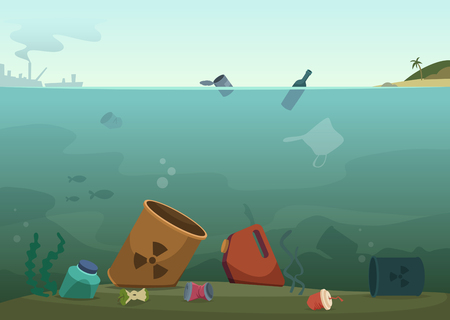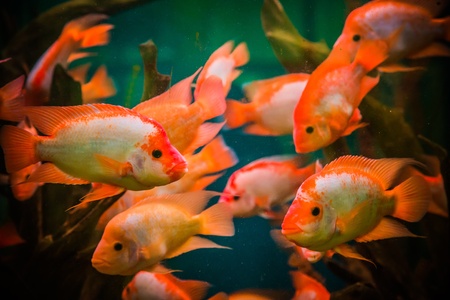Understanding Fish Stress
When it comes to keeping a thriving aquarium, understanding fish stress is crucial for preventing disease and promoting a healthy environment. Stress in aquarium fish isn’t always obvious at first glance, but it can have serious impacts on their overall well-being. Biologically, stress triggers the release of hormones like cortisol, which can weaken immune systems and make fish more susceptible to illness. From an environmental perspective, factors such as sudden changes in water temperature, poor water quality, overcrowding, or inappropriate tank mates can all contribute to elevated stress levels. Common signs that your fish are stressed include rapid gill movement, loss of color, erratic swimming patterns, reduced appetite, and hiding more than usual. By observing these behaviors and recognizing potential causes—whether its a spike in ammonia or bullying from other fish—you can take early action to address problems before they escalate into disease. Understanding these stress signals is the first step toward creating a safe and comfortable home for your aquatic pets.
2. Recognizing Common Fish Diseases
Understanding the most common fish diseases found in home aquariums is essential for keeping your aquatic friends healthy and stress-free. Stress is a major trigger that weakens a fish’s immune system, making them more vulnerable to infections. Early detection of symptoms can make all the difference between a quick recovery and a tank-wide outbreak.
Frequent Aquarium Fish Diseases and Their Symptoms
| Disease | Common Symptoms | Main Causes |
|---|---|---|
| Ich (White Spot Disease) | Small white spots on fins/body, rubbing against objects, rapid breathing | Sudden temperature changes, poor water quality, new fish introduction |
| Fin Rot | Frayed or disintegrating fins, red or white edges on fins, lethargy | Bacterial infection due to dirty water or stress from aggressive tank mates |
| Velvet Disease | Gold or rusty dust on skin, clamped fins, scratching against tank surfaces | Parasite blooms often triggered by stress or weakened immunity |
| Fungal Infections | Cotton-like growths on body or gills, lethargy, loss of appetite | Poor water conditions, wounds left untreated, high organic waste |
| Swim Bladder Disorder | Difficulty swimming upright, floating at surface or sinking to bottom, loss of balance | Overfeeding, constipation, sudden diet changes, genetic predisposition |
| Columnaris (Cotton Mouth) | Cotton-like patches around mouth/fins, ulcers, rapid breathing | Bacteria thriving in low-oxygen environments; stress from crowding or poor filtration |
The Role of Stress in Fish Health
Stress is a silent culprit in many aquarium disease outbreaks. When fish are exposed to fluctuating water parameters, overcrowding, bullying by other fish, or improper diet, their stress hormones spike. This suppresses their natural immune defenses, giving bacteria and parasites an easy way in. Recognizing the signs of stress—such as erratic swimming, hiding more than usual, faded colors, or sudden loss of appetite—is just as important as spotting disease symptoms themselves.
Why Early Detection Matters
The sooner you catch these signs and correct the underlying causes—whether it’s improving water quality, reducing aggression among tank mates, or adjusting feeding routines—the better your chances of preventing disease from taking hold. Being proactive not only saves your fish but also preserves the harmony and beauty of your aquarium environment.

3. Setting Up a Healthy Aquarium Environment
Creating a stress-free home for your fish starts with thoughtful aquarium setup. By focusing on water quality, temperature, filtration, and aquascaping, you’ll help your fish thrive while minimizing their risk of disease.
Water Quality: The Foundation of Fish Health
High-quality water is non-negotiable in any healthy aquarium. Always treat tap water to remove chlorine and heavy metals before adding it to your tank. Regularly test parameters like ammonia, nitrite, nitrate, and pH using reliable test kits. Aim for consistency—sudden changes can seriously stress your fish. Make partial water changes (about 20-25%) weekly to dilute toxins and replenish essential minerals.
Temperature: Keeping It Just Right
Fish are cold-blooded, so stable water temperature is vital. Research the preferred range for your species—most tropical fish thrive between 74-80°F (23-27°C). Use an accurate aquarium heater and thermometer to maintain this range, especially if your home’s temperature fluctuates. Sudden shifts can weaken immune systems and invite disease.
Filtration: Clean Water, Happy Fish
A quality filter is your best ally in maintaining clean water. Choose a filter rated for your tank size and consider one that offers mechanical, biological, and chemical filtration. Rinse filter media in tank water during maintenance (never tap water!) to preserve beneficial bacteria that break down harmful waste products.
Aquascaping: More Than Just Decoration
Thoughtful aquascaping reduces stress by mimicking natural habitats. Incorporate live or artificial plants, caves, rocks, and driftwood to create hiding spots and territorial boundaries. This allows shy or territorial species to feel secure and helps reduce aggression. Avoid overcrowding; overstocked tanks lead to poor water quality and more stressed fish.
Best Practices at a Glance
- Cycle your tank before adding fish
- Keep up with routine maintenance
- Monitor environmental parameters closely
- Create a varied landscape with plenty of shelter
By following these best practices for tank setup, you’re not just making your aquarium look good—you’re actively supporting the health and happiness of every finned resident.
4. Aquarium Maintenance Routines
Keeping your fish healthy and stress-free starts with sticking to a solid aquarium maintenance routine. Just like any living space, aquariums require regular upkeep to ensure the water remains clean, the environment stable, and disease risks low. A disciplined approach to maintenance isn’t just about reacting to problems—it’s about preventing them before they even start.
Essential Maintenance Tasks
| Task | Frequency | Why It Matters |
|---|---|---|
| Partial Water Changes (20-30%) | Weekly/Biweekly | Removes toxins, replenishes minerals, balances water chemistry |
| Gravel Vacuuming | Weekly/Biweekly | Cleans up uneaten food and waste, prevents ammonia spikes |
| Filter Cleaning/Replacement | Monthly or as needed | Keeps filtration efficient, prevents buildup of harmful debris |
| Algae Scrubbing | As needed | Maintains visibility and prevents algae overgrowth stress for fish |
| Health Checks & Observation | Daily | Catches early signs of stress or disease, supports timely intervention |
The Power of Routine: Proactive vs Reactive Care
Aquarium care is much more effective when its proactive. By establishing habits—like changing water on the same day each week or observing your fish while feeding—you get ahead of issues that could otherwise spiral out of control. This disciplined rhythm not only keeps water conditions optimal but also helps you notice subtle changes in fish behavior or appearance that might signal early stress or illness.
Troubleshooting Through Habits
If something seems off in your tank, a well-maintained log of cleaning schedules and observed behaviors can help you pinpoint problems quickly. Consistent routines make troubleshooting easier; you’ll know exactly what’s changed and when, turning you into a more confident caretaker.
Building a Healthy Aquarium Culture at Home
In American homes, where aquariums are often a centerpiece of relaxation and style, setting up maintenance as a family routine can also build responsibility and appreciation for aquatic life. Whether you use a calendar app reminder or an old-school checklist on the fridge, staying organized with your aquarium tasks is key to giving your fish the best possible chance at thriving—no unnecessary stress or preventable diseases allowed!
5. Fish Compatibility and Social Dynamics
When building a healthy aquarium environment, understanding the social nature and compatibility of your fish is just as crucial as maintaining water quality. Every species has its own unique temperament—some are peaceful community members, while others can be territorial or even aggressive. Choosing the right mix of tank mates helps prevent bullying, chronic stress, and outbreaks of disease that often result from social tension.
Choosing Compatible Species
Before adding any new fish to your aquarium, research their typical behaviors and compatibility with existing residents. American hobbyists often rely on community tank staples like tetras, guppies, and cory catfish because of their gentle nature. Avoid combining known aggressors like certain cichlids or bettas with timid or slow-moving fish to minimize nipping and harassment.
Group Size Matters
Many fish feel safer and less stressed when kept in appropriate group sizes. For example, schooling species such as danios or rasboras thrive in groups of six or more—smaller numbers can leave individuals feeling vulnerable and anxious. On the other hand, some fish prefer solitary living or paired arrangements. Always match your stocking choices to the natural social structure of each species.
Matching Personalities for Harmony
Just like people, fish have personalities that affect how they interact with others. Observe your tank’s dynamics closely after introducing new members. If you notice persistent chasing, fin-nipping, or hiding, it may signal a mismatch. Rearranging tank décor can disrupt territories and help diffuse tension, but sometimes rehoming a troublemaker is best for everyone’s health.
Ultimately, thoughtful fish selection, proper group sizing, and sensitivity to individual personalities create a balanced social scene inside your aquarium. This approach not only reduces stress and aggression but also supports robust immune systems—helping your aquatic pets stay happy and disease-free in their underwater home.
6. Signs of Trouble and What to Do
Spotting Early Red Flags
Even the healthiest aquariums can run into problems, so being able to spot early warning signs is key. Watch for behavioral changes like fish hiding more than usual, swimming erratically, losing their appetite, or isolating themselves from tank mates. Physical symptoms such as faded colors, clamped fins, white spots, frayed tails, or unusual growths are also important red flags. Don’t ignore cloudy eyes or rapid gill movement—these may be signs of stress or illness that require quick action.
How to Respond to Sick or Stressed Fish
If you notice something off with your fish, act fast but thoughtfully. First, check your water parameters—ammonia, nitrite, nitrate, pH, and temperature—to rule out environmental stressors. Perform a partial water change if any levels are off and remove uneaten food or waste. If only one fish seems sick, use a quarantine tank to isolate them and prevent spreading disease. Avoid adding medications unless you’re sure of the diagnosis; many over-the-counter treatments can do more harm than good if used incorrectly.
Simple Steps for Immediate Action
- Test water quality using reliable test kits
- Increase aeration if you suspect oxygen deficiency
- Feed high-quality food in small amounts to avoid leftovers polluting the tank
- Remove aggressive tank mates if bullying is observed
When It’s Time to Consult a Vet
Some situations require professional help. If your fishs condition doesn’t improve after addressing water quality and basic care, or if several fish show symptoms at once, reach out to an aquatic veterinarian. Persistent wounds, swelling, rapid breathing, or unexplained deaths are all serious issues that need expert attention. Remember, finding a vet who specializes in fish may take some research—check with local aquarium shops or organizations like the American Veterinary Medical Association for referrals.
Trust Your Instincts
Your day-to-day observations are the best tool in catching problems early. Trust what you see: if something feels off in your aquarium community, it probably is. Acting quickly not only helps individual fish recover but also keeps your entire tank healthy and thriving.


